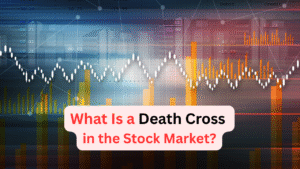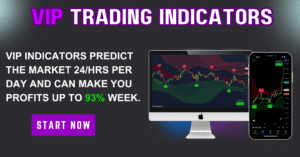
What Is a Death Cross in the Stock Market?
In the world of technical analysis, few terms grab attention like the ominously named “Death Cross.” Despite its dramatic title, this pattern isn’t a prophecy of doom—it’s a well-known chart signal used by traders and investors to identify potential trend reversals, particularly from bullish to bearish. Understanding what a Death Cross is, how it forms, and how to respond to it can help you become a more informed investor.
Definition: What Is a Death Cross?
A Death Cross occurs when a stock or index’s short-term moving average—typically the 50-day moving average (MA)—crosses below its long-term moving average, most commonly the 200-day moving average. This crossover is taken as a bearish signal, suggesting that downward momentum may be accelerating and that the asset could be entering a long-term downtrend.
In simpler terms, it shows that recent prices are trending lower and are dragging the shorter moving average down, enough to cross under the longer trend line.
The Psychology Behind It
The Death Cross is popular among technical analysts because it captures a shift in market sentiment. When the 50-day average drops below the 200-day average, it tells investors that recent price action is weaker than the long-term trend. This shift can indicate the early stages of a bear market or at least a prolonged pullback.
It often triggers a psychological reaction in the market—especially among traders who rely heavily on technical indicators. That reaction can amplify the sell-off, sometimes turning what might have been a minor correction into a full-blown downturn.
Historical Examples
Let’s look at some notable instances when a Death Cross predicted or coincided with a significant market decline:
1. 2008 Financial Crisis
In December 2007, the S&P 500 experienced a Death Cross, as the 50-day MA crossed below the 200-day MA. This signal occurred shortly before the market plummeted in 2008 due to the global financial crisis. While the signal didn’t pinpoint the exact bottom or top, it served as an early warning of worsening conditions.
2. COVID-19 Pandemic (2020)
In March 2020, during the onset of the COVID-19 pandemic, major indices like the Dow Jones Industrial Average and S&P 500 formed Death Crosses. While the market eventually rebounded quickly due to fiscal and monetary interventions, the initial signal correctly indicated a sharp sell-off.
3. Bitcoin (2021)
The Death Cross isn’t limited to stocks. In June 2021, Bitcoin’s 50-day MA fell below its 200-day MA, forming a Death Cross. The cryptocurrency saw further declines in the weeks following the crossover.
Should You Sell When You See a Death Cross?
While the Death Cross is a bearish indicator, it’s not necessarily a reason to panic-sell. The signal is lagging, meaning the crossover happens after some of the downward movement has already occurred. In many cases, the price may already be near a bottom when the Death Crosses appear.
Savvy investors often use the Death Cross as just one tool in a broader strategy. It may signal a time to reassess risk, tighten stop-loss orders, or hedge positions, rather than exit the market entirely.
Death Cross vs. Golden Cross
The opposite of a Death Cross is a Golden Cross, where the 50-day MA crosses above the 200-day MA, indicating potential bullish momentum.
Both crosses are based on moving average crossovers, but they provide different types of signals:
| Indicator | Signal Type | What It Suggests |
|---|---|---|
| Death Cross | Bearish | Possible market downturn |
| Golden Cross | Bullish | Possible market uptrend |
Limitations of the Death Cross
Despite its historical significance, Death Crosses is not always accurate. In some cases, it may produce false signals during sideways markets or short-lived corrections. For example:
- In 2016, the S&P 500 formed a Death Cross but rebounded shortly afterward.
- In 2021, Tesla experienced a Death Cross, but the stock rallied not long after.
Final Thoughts
The Death Cross is a valuable signal for understanding market momentum, especially when paired with other indicators like volume trends, RSI (Relative Strength Index), or MACD (Moving Average Convergence Divergence). While it’s not a crystal ball, it can help traders and investors identify when the market may be shifting from bullish to bearish behavior.
As always, relying solely on one indicator isn’t a sound investment strategy. The Cross should be part of a larger toolkit that includes both technical and fundamental analysis, as well as an understanding of macroeconomic conditions.
FAQs About the Death Cross
1. Are Death Crosses a guaranteed sign of a market crash?
No, they are not a guaranteed predictor. While it often appears before major declines, it can also result in false signals during periods of market consolidation.
2. How often do Death Crosses occur?
Death Crosses occur periodically, often following a correction or bear market. On major indices like the S&P 500, they might appear every few years.
3. Should long-term investors worry about a Death Cross?
Long-term investors typically use fundamental analysis more than technical signals. Death Crosses may prompt some caution, but it shouldn’t trigger a full portfolio sell-off unless supported by broader evidence.
4. Can a Death Cross happen on any time frame?
Yes. While the 50-day and 200-day are the most common, traders can look at other time frames (like 20-day and 50-day) for short-term analysis. However, longer time frames tend to carry more weight.
5. How can I prepare for a Death Cross?
You can prepare by regularly monitoring moving averages and combining them with other indicators. If a Death Cross occurs, consider reducing risk exposure or reevaluating your positions in light of broader market conditions.
